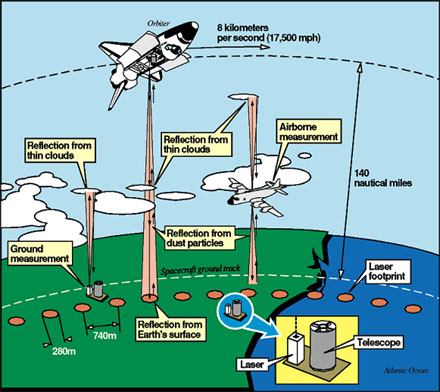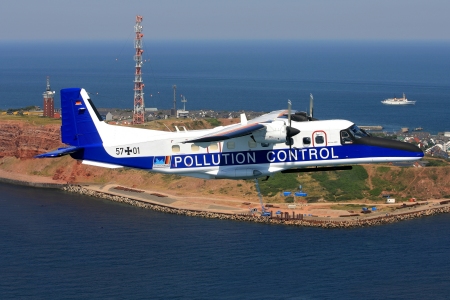1. Lidar
Lidar applications
Out of the previously described measuring principles, various ways and means for lidar applications can be derived. A few applications have been mentioned here already. These examples show that lidar is not only applicable for ground-based operations, as shown on the photos on the previous page, but also for operations on board ships, aircraft, and even space shuttles (as seen on the picture of the LITE experiment on the introductory page).
One example of a lidar application on board an aircraft is using the reflexion of the laser pulse on the ground to measure the time that light needs to cover the distance between the aircraft and the ground, and this with an accuracy to the last centimetre. If the aircraft position is determined simultaneously with these measurement, the resulting data can then be used to create very precise three-dimensional terrain models. This method can also be applied to the oceans - so long as the waters are not very turbid - to determine the bottom depth of the coastal waters down to approx. 50 m.
Another lidar application is measuring fluorescent signals on the water surface from aboard an aircraft (picture left). This method can be used to trace oil spills in the oceans, oil being a fluorescent substance. Because this method is very sensitive, it can detect even small amounts of oil, and is therefore very useful in tracking down deliberate oil discharges at sea. Regular surveillance flights over the North Sea have helped considerably in reducing oil pollution in the area.
The illustration below shows a few examples of lidar applications - on the ground, in the air and in space. Atmospheric data such as cloud coverage and cloud density or air pollution caused by dust particles are measured.

Source: NASA

